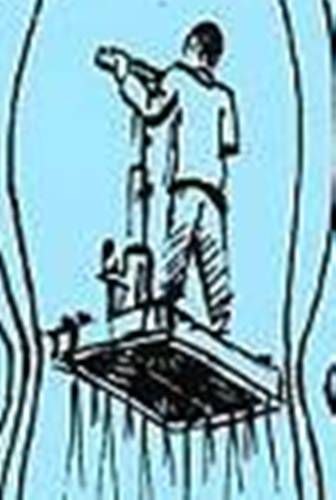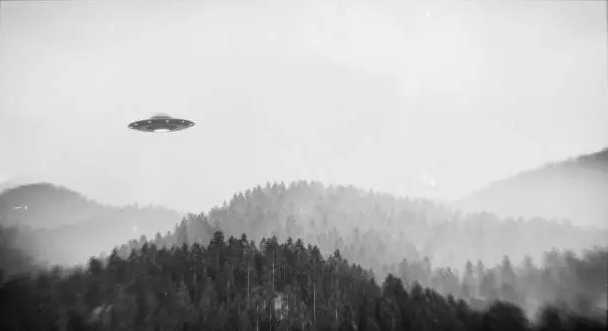Next Steps for Levitation
Discovering a short distance levitation transportation product

Main photo by Andrew Spencer on Unsplash
What are the next steps for levitation in transportation? The continuation of levitation research finds there is an adaptation to how bugs move in relation to Earth’s magnetic field. Atmospheric fields contain static electromagnetic action.
A few blogposts ago, a phenomenal study in researchgate.net by Vitor Matheus Izoldi Nogueira, was highlighted. That study raises a brilliant conclusion that some spiders jump by the static electricity of Earth’s atmosphere.
Magnetosphere
NASA: studies of the magnetosphere include research into: understanding the nature of the electromagnetic phenomena in near-Earth space; how near-Earth space responds to external and internal stimuli; how the coupled middle and upper atmosphere respond to external factors; and how the various regions of the magnetosphere and upper atmosphere interact with each other.
A magnetosphere is the region around a planet dominated by the planet's magnetic field. Other planets in our solar system have magnetospheres, but Earth has the strongest one of all the rocky planets: Earth's magnetosphere is a vast, comet-shaped bubble, which has played a crucial role in our planet's habitability. Life on Earth initially developed and continues to be sustained under the protection of this magnetic environment. The magnetosphere shields our home planet from solar and cosmic particle radiation, as well as erosion of the atmosphere by the solar wind - the constant flow of charged particles streaming off the sun.
According to Britannica.com: Magnetosphere, region in the atmosphere where magnetic phenomena and the high atmospheric conductivity caused by ionization are important in determining the behaviour of charged particles.
The Earth, in contrast to Mars and Venus, has a significant surface magnetic field (approximately 0.5 gauss), which, like its gravitational field, becomes weaker as the distance from the centre of the Earth increases. In the direction of the Sun, at approximately 10 Earth radii (almost 65,000 km, or 40,000 miles), the magnetic field is so weak that the pressure associated with particles escaping from the Earth’s gravity is comparable to the opposing pressure associated with the solar wind—the flux mainly of protons and electrons escaping from the Sun’s gravitational field. This equilibrium region, with a characteristic thickness of 100 km (60 miles), is called the magnetopause and marks the outer boundary of the magnetosphere. The lower boundary of the magnetosphere is several hundred kilometres above the Earth’s surface.
Measuring the magnetosphere
According to the US Dept of Energy, the magnetosphere is measured by intensity of magnetic field strength. An honor reserved for very few scientists, the tesla (T) was designated as the unit of measurement for magnetic flux density, or the strength of a magnetic field, in 1956. The tesla is used as the unit of measurement for very strong magnetic fields and is the International System of Units (SI) standard, while the gauss (G) is commonly used for weaker magnetic fields. The determination for the unit of measurement is one of scale: one tesla is equal to 10,000 gauss. For comparison, the Earth's magnetic field has a magnetic flux density of about 50 microtesla, or 0.00005 tesla.
Interactions of Earth’s electromagnetic charge
Lightening carries extraordinary energy. It’s found to be electromagnetic radiation or heat created by the rapid movement of electrons. This movement creates a tremendous negative discharge from atmospheric energy buildup within certain storm patterns. However, the presents of electromagnetic energy, is constant.
Nikola Tesla wanted to take advantage of Earth’s electromagnetic presents which encompasses the planet and her atmosphere.
The largest endeavor by Nikola Tesla was unfinished. Wikipedia explains: Wardenclyffe Tower was his idea to provide free electricity access to everyone on the planet; In laboratory work and later large-scale experiments at Colorado Springs in 1899, Tesla developed his own ideas on how a worldwide wireless system would work. He theorized from these experiments that if he injected electric current into the Earth at just the right frequency he could harness what he believed was the planet's own electrical charge and cause it to resonate at a frequency that would be amplified in "standing waves" that could be tapped anywhere on the planet to run devices or, through modulation, carry a signal. His system was based more on 19th century ideas of electrical conduction and telegraphy instead of the newer theories of airborne electromagnetic waves, with an electrical charge being conducted through the ground and being returned through the air.
The magnetosphere and transportation
Analyzing this electromagnetic action provides the foundation in searching Earth’s magnetosphere and its interaction with spiders and chitin shelled bugs for the possible relationship to transportation. The pursuit for sustainable transportation is in finding an efficient power source. The key aspect in this analysis, is the knowledge that there is energy in the atmosphere; there is energy potential in Earth’s magnetosphere. Earth’s surface provides a common ground to engage electric action for connectivity.
The purpose here is to find nature’s methodology of levitation. Is there indeed an electromagnetic power source for some bugs? In the levitation device allegedly built by Viktor Grebennikov, is there a relationship with electromagnetic action and his discovery of cavity structures effect (CSEs)?
Levitation of bugs and electromagnetism
The excitement found in theoretical physics is asking unasked questions. Vitor Matheus Izoldi Nogueira asked such a question: ‘What’s the relationship between electromagnetism and a spider?’
There is a relationship with crystals and frequency oscillations. This relationship interacts with electromagnetics. How does this relationship interact with CSEs and the manipulation of gravitational fields? Viktor Grebennikov claimed to have answered this.
Does nature have another way to levitate large objects through a leverage or amplification process? How deep does a CSE need to be for it to provide a physical affect reaction? Can the CSE field be compressed? And, the most effective question to be answered is in finding the relationship to Earth’s electrogravitics or electromagnetic action. In other words: a form of crystallization structure that can provide a manageable interaction with Earth’s magnetic field. This field is in close proximity to Earth’s surface and within the same spectra as electromagnetic radiation.



